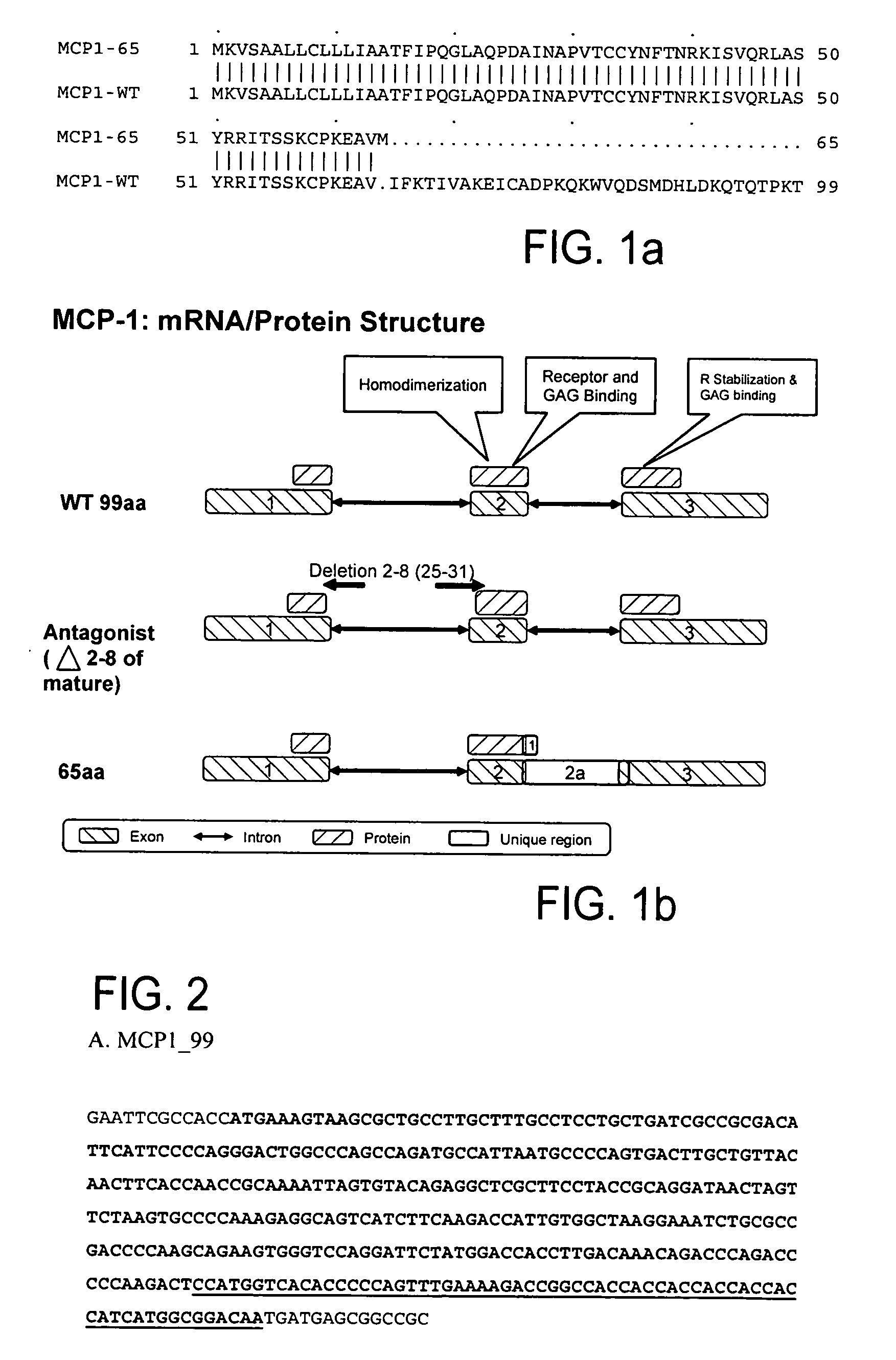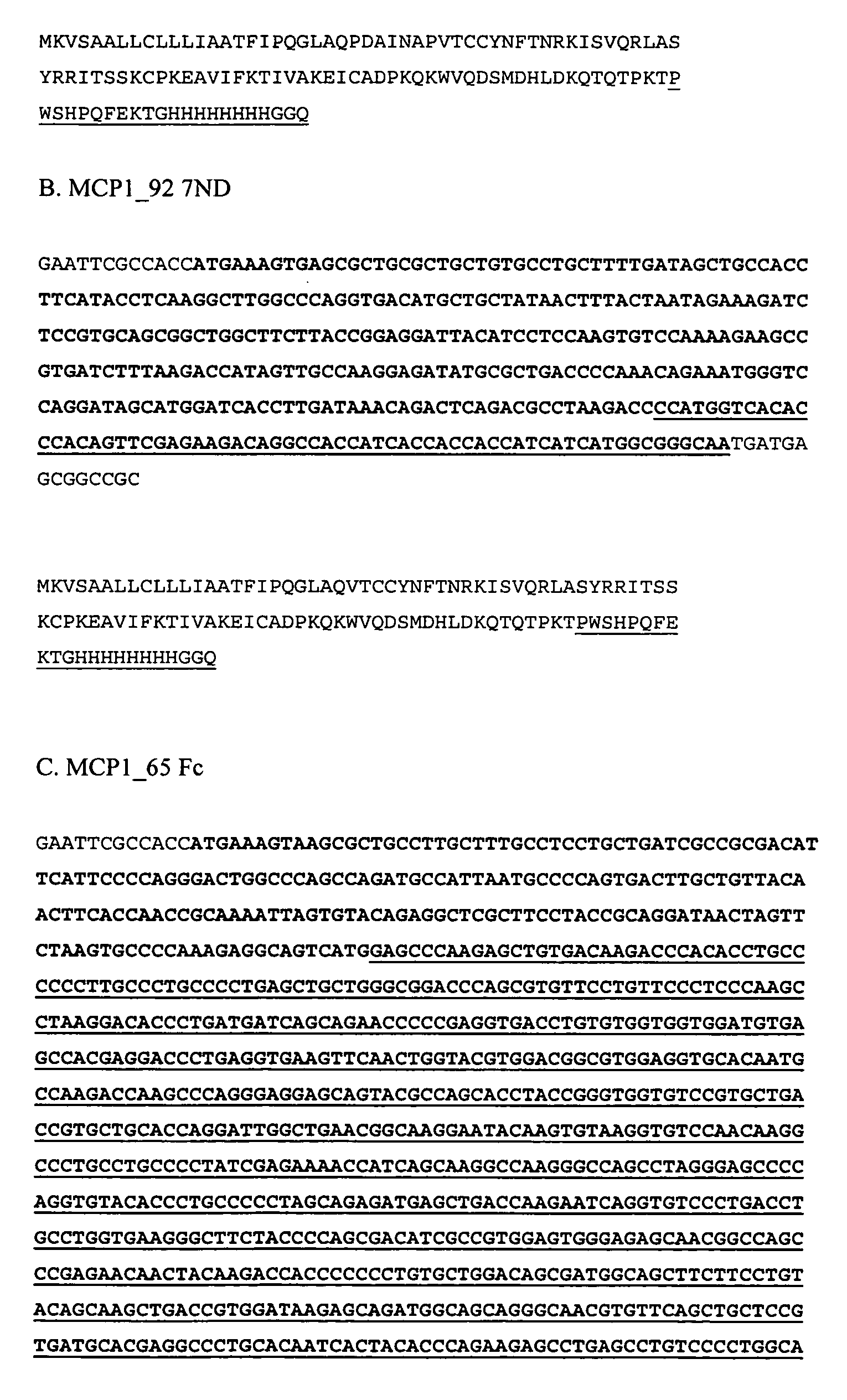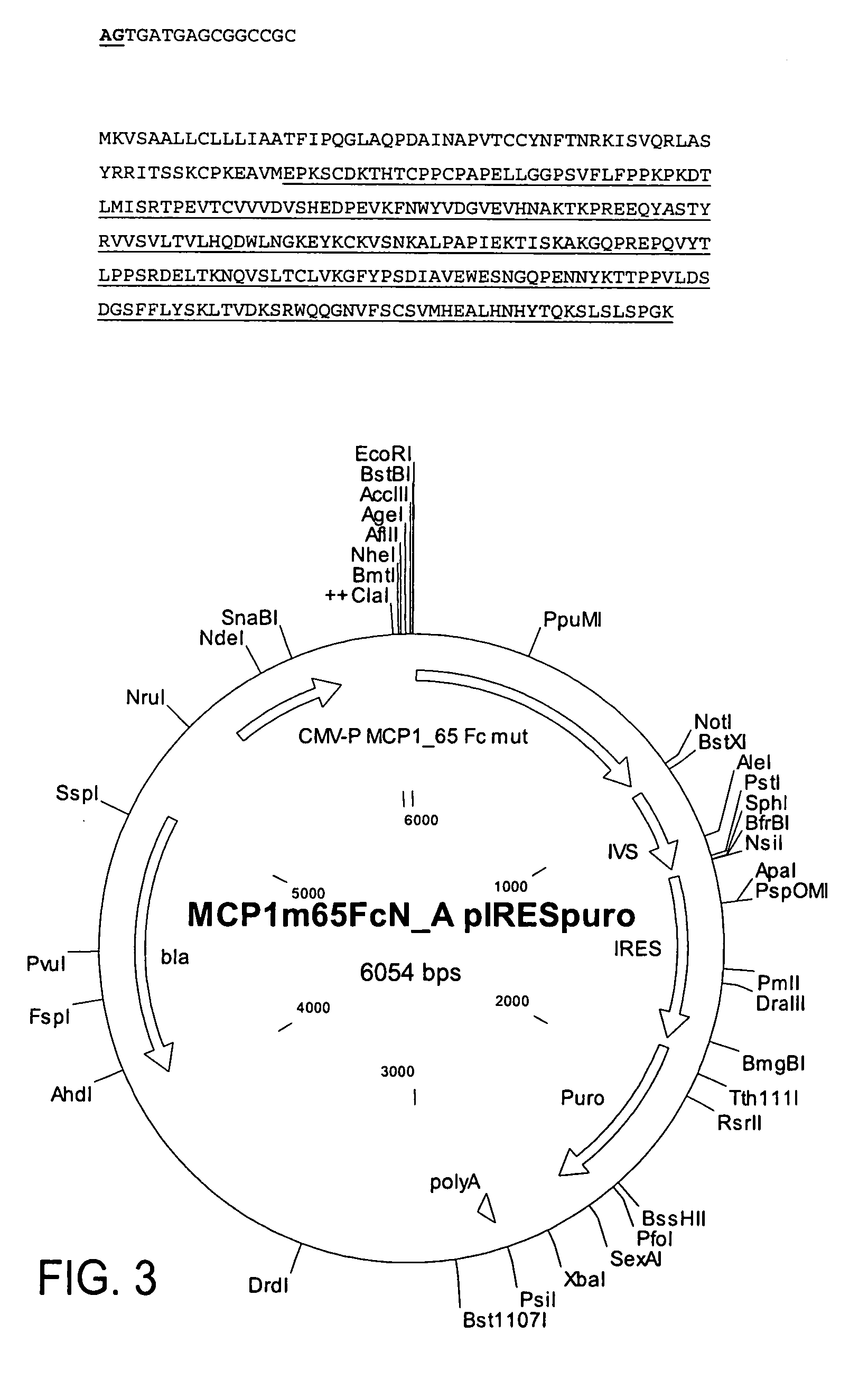MCP-1 splice variants and methods of using same
- Summary
- Abstract
- Description
- Claims
- Application Information
AI Technical Summary
Benefits of technology
Problems solved by technology
Method used
Image
Examples
example 1
Description for Cluster S71513
[0285] Cluster S71513 features 1 transcript, S71513_T1 (SEQ ID NO:1) and 5 segments of interest, S71513_NO (SEQ ID NO:2); S71513_N1 (SEQ ID NO:3); S71513_N4 (SEQ ID NO:4); S71513_N5 (SEQ ID NO:5); and S71513_N6 (SEQ ID NO:6). The transcript S71513_T1 (SEQ ID NO:1) encodes a variant protein S71513_P1 (SEQ ID NO:9).
[0286] These sequences are variants of the known protein Small inducible cytokine A2 precursor ((SEQ ID NO:8) SwissProt accession identifier SY02_HUMAN; known also according to the synonyms CCL2; Monocyte chemotactic protein 1; MCP-1; Monocyte chemoattractant protein-1; Monocyte chemotactic and activating factor; MCAF; Monocyte secretory protein JE; HCl1), referred to herein as the previously known protein.
[0287] The amino acid sequence comparison between MCP1-65 (SEQ ID NO: 9; S71513_P1) and the known MCP1-WT (SEQ ID NO: 8; NP—002973) is shown in FIG. 1a. The comparison report between S71513_P1 and SY02_HUMAN (NP—002973) is given below:
[0...
example 2
Cloning and Expression of MCP-1 Variants
[0296] This example relates to the cloning and expression of MCP-1 variants according to the present invention. The following MCP-1 variants were selected: MCP-1—99 (wild type) (SEQ ID NOs:10, 11); MCP-1—92—7ND (positive control) (SEQ ID NOs:12, 13); MCP-1—65 Fc variant of present invention (SEQ ID NOs:14, 15).
[0297]FIG. 1b shows the schematic mRNA and protein structure of MCP-1. “WT 99aa” represents the known MCP-1 (SEQ ID NO:8). “65aa” represents the MCP-1 splice variant of the present invention, SEQ ID NO:9. “Antagonist (deletion 2-8 of mature) represents the known MCP-1-92-7ND (SEQ ID NO:25). Exons are represented by boxes with upper left to lower right fill, while introns are represented by two headed arrows. Proteins are shown in boxes with upper right to lower left fill. The unique regions are represented by white boxes.
Cloning of MCP-1 Variants:
[0298] The MCP-1 variant sequences were codon optimized to boost protein expression in...
example 3
MCP-1 Variant Protein Production and Purification
Description of Propagation Process
[0306] In order to produce sufficient amounts of the proteins, cells expressing MCP1-65-Fc-mut, MCP1-92-7ND and MCP1-99 WT were propagated to a final volume of 2000 ml. When the cells reached a density of about 2.7×106 cells / ml, the cultures were harvested by centrifugation and the sup filtered through a 0.22 um filter and used for protein purification. Harvested culture medium was concentrated approximately 5-10 fold and filtered through a 0.22 um filter.
Purification
[0307] MCP1-99-His-tag (WT) and MCP1-92-7ND-His-tag labeled proteins according to the present invention were purified by affinity chromatography using Ni-NTA resin, according to the following protocol. The supernatent was prepared as previously described and transferred to 3×250 ml centrifuge tubes. Six ml of Ni—NTA Superflow beads (Ni—NTA Superflow®, QIAGEN) were equilibrated with 10 column volumes of WFI (Teva Medical #AWF7114) a...
PUM
| Property | Measurement | Unit |
|---|---|---|
| Fraction | aaaaa | aaaaa |
| Composition | aaaaa | aaaaa |
| Pharmaceutically acceptable | aaaaa | aaaaa |
Abstract
Description
Claims
Application Information
 Login to View More
Login to View More - R&D
- Intellectual Property
- Life Sciences
- Materials
- Tech Scout
- Unparalleled Data Quality
- Higher Quality Content
- 60% Fewer Hallucinations
Browse by: Latest US Patents, China's latest patents, Technical Efficacy Thesaurus, Application Domain, Technology Topic, Popular Technical Reports.
© 2025 PatSnap. All rights reserved.Legal|Privacy policy|Modern Slavery Act Transparency Statement|Sitemap|About US| Contact US: help@patsnap.com



